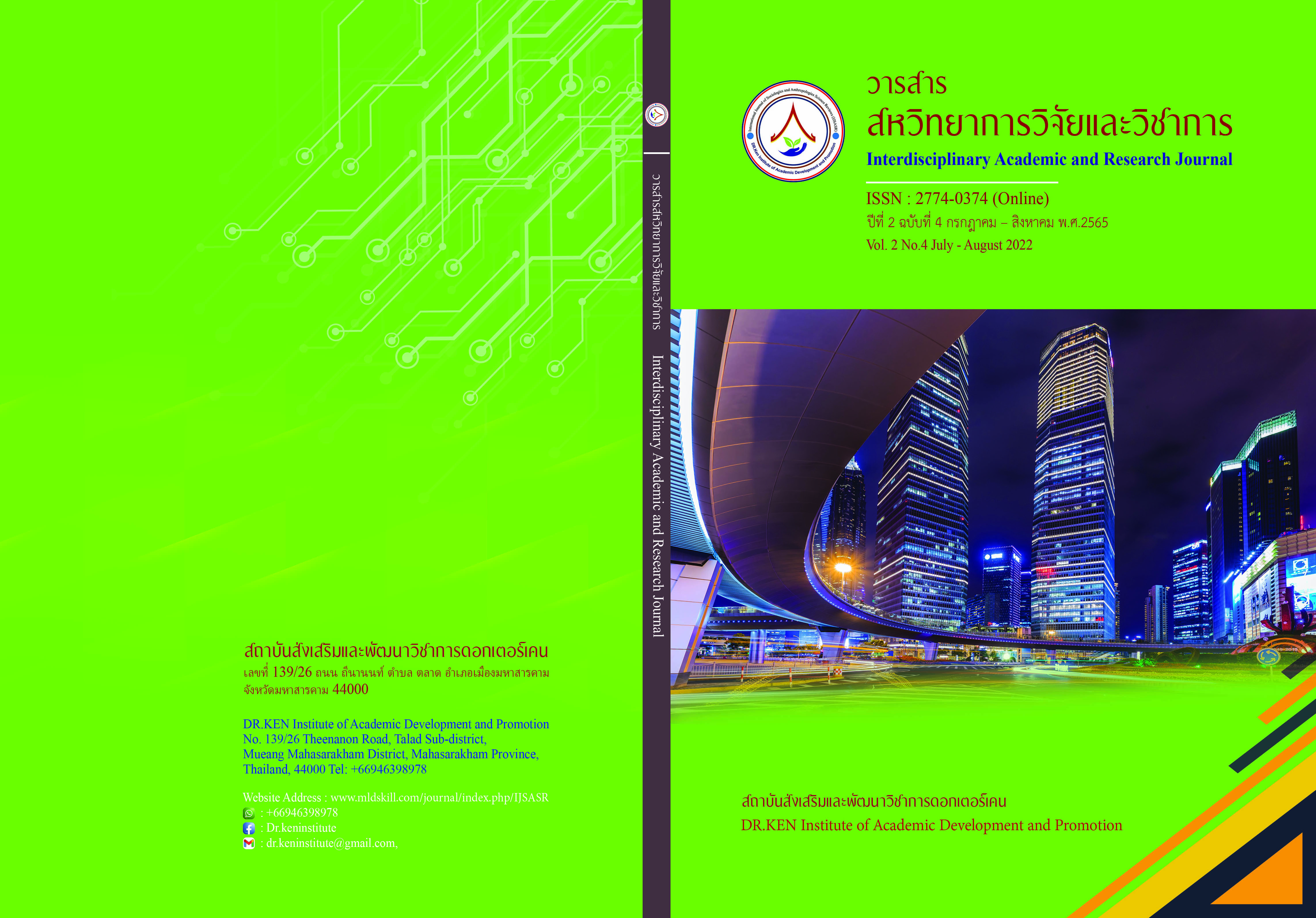Information Management for Sustainable Waste Management
DOI:
https://doi.org/10.14456/iarj.2022.55Keywords:
Management; , Information; , Sustainable Source Waste ManagementAbstract
At present, Thailand has urbanization and economic growth causing the problem of more solid waste and more sewage. There is an increase in the amount of waste that affects the quality of life and the environment. It must be received. With proper management, future waste management is likely to be more difficult as the composition of the waste will be difficult to eliminate, land shortages in the construction of waste disposal centers, budget shortages, current public opposition to the Construction of waste disposal sites, as well as the problem of lack of participation of local people. Therefore, this research aimed to study: To develop a sustainable waste management information system through the information system. And set up an information management center for sustainable waste management at the source. Acting on the population is Village No.1 Ban Nong Daeng Noi Village No.2 Ban Khok Mang Ngoi Village No.3 Ban Non-Pradu Village No.4 Ban Nong Noi Village No.5 Ban Sok Kok Daeng Village No.6 Ban Nong Noi Village No.7 Ban Nong Noi Village No.8 Ban Sa Kaeo Village No.9 Ban Nong Mek Village No. 10 Ban Khok Mang Ngoi, Village No.11 Ban Nong Mead Ae Village No.12 Ban Nong No and Village No.13 Ban Nong Daeng Noi. and the sample selected specifically Village scholars, community leaders, people's representatives and representatives of the public sector network Number of people 15 people In a small group discussion on the issue of establishing an information management center on sustainable source waste management. The findings of the study revealed that:
1.Develop an information system for waste management at source through the sustainable information system. There are spatial connections. and has a standardized storage structure Consisting of a spatial database in shapefile format of 12 data files.
2. Set up an information management center for sustainable waste management at the source. It was found that there was a need to establish an information management center for sustainable waste management at the source. Because the community currently has a waste management center that originates from households. But still lacks systematic storage of waste management information systems especially information organized in the form of social media programs. because it makes it easy to access and distribute including disseminating various stories in real-time Information can be imported at any time by simply connecting to the Internet on both computers and mobile phones.
References
กรมควบคุมมลพิษ. (2561). รายงานสถานการณ์มลพิษประเทศไทยปี พ.ศ. 2560. กรุงเทพฯ: บริษัทวงศ์สว่างพับลิชชิ่ง แอนด์พริ้นติ้งค์ จำกัด.
กรมส่งเสริมคุณภาพสิ่งแวดล้อม. (2542). เคล็ดลับในการจัดการขยะ. พิมพ์ครั้งที่ 2. ฝ่ายพัฒนาและผลิตสื่อ กองส่งเสริมและเผยแพร่.
กรมส่งเสริมภาพสิ่งแวดล้อม. (2537). พระราชบัญญัติส่งเสริมและรักษาคุณภาพสิ่งแวดล้อมแห่งชาติพ.ศ.2535 และกฎหมายที่เกี่ยวข้อง. กรุงเทพมหานคร: ชวนพิมพ์.
กรมอนามัย กระทรวงสาธารณสุข. (2548). คู่มือพระราชบัญญัติการสาธารณสุข พ.ศ.2535. (พิมพ์ครั้งที่3). กรุงเทพฯ: องค์การรับส่งสินค้าและพัสดุภัณฑ์.
ดาวรถา วีระพันธ์. (2561). ระบบสารสนเทศจัดการสุขภาพของบุคลากรและนักศึกษาด้วยเทคโนโลยีบาร์ โค้ด. วารสารวิจัยและพัฒนาวไลยอลงกรณ์ในพระบรมราชูปถัมภ์. 13(2), 126-136.
เทศบาลเมืองชัยภูมิ. (2564). รายงานประจำปี พ.ศ.2564. ชัยภูมิ: เทศบาลเมืองชัยภูมิ.
ธีรชัย ศิริเมธากุล. (2556). MSIT แอปพลิเคชันบน อุปกรณ์เคลื่อนที่. วิทยานิพนธ์ปริญญา วิทยาศาสตรมหาบัณฑิต: มหาวิทยาลัยเทคโนโลยีมหานคร.
นัฐพงศ์ ส่งเนียม. (2563). การพัฒนาระบบสารสนเทศในการจัดการขยะและบำบัดน้ำเสียแบบครบวงจร.วารสารวิจัย มหาวิทยาลัยเทคโนโลยีราชมงคลศรีวิชัย 12(3), 506-521.
องค์การบริหารส่วนตำบลโคกมั่งงอย. (2564). รายงานประจำปี พ.ศ.2564. ชัยภูมิ: องค์การบริหารส่วนตำบลโคกมั่งงอย.
Downloads
Published
How to Cite
Issue
Section
License
Copyright (c) 2022 เลิศฤทธิ์ ตั้งชูวงษ์, ฉัตร พยุงวิวัฒนกูล, วิชุดา ตั้งชูวงษ์

This work is licensed under a Creative Commons Attribution-NonCommercial-NoDerivatives 4.0 International License.
Copyright on any article in the Interdisciplinary Academic and Research Journal is retained by the author(s) under the under the Creative Commons Attribution-NonCommercial-NoDerivatives 4.0 International License. Permission to use text, content, images, etc. of publication. Any user to read, download, copy, distribute, print, search, or link to the full texts of articles, crawl them for indexing, pass them as data to software, or use them for any other lawful purpose. But do not use it for commercial use or with the intent to benefit any business.
















.png)


